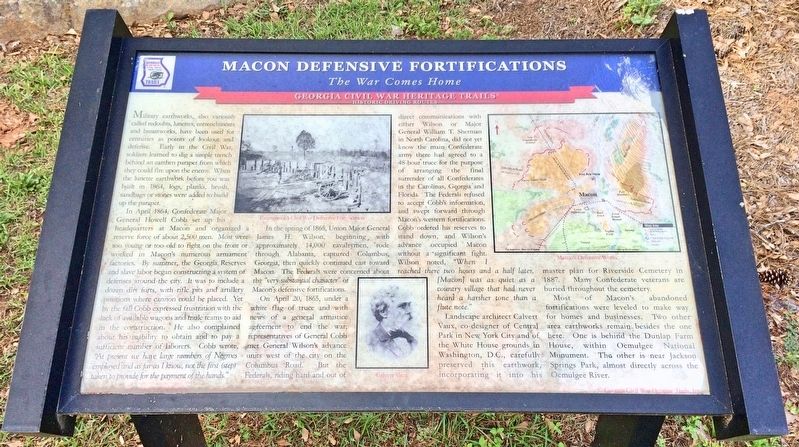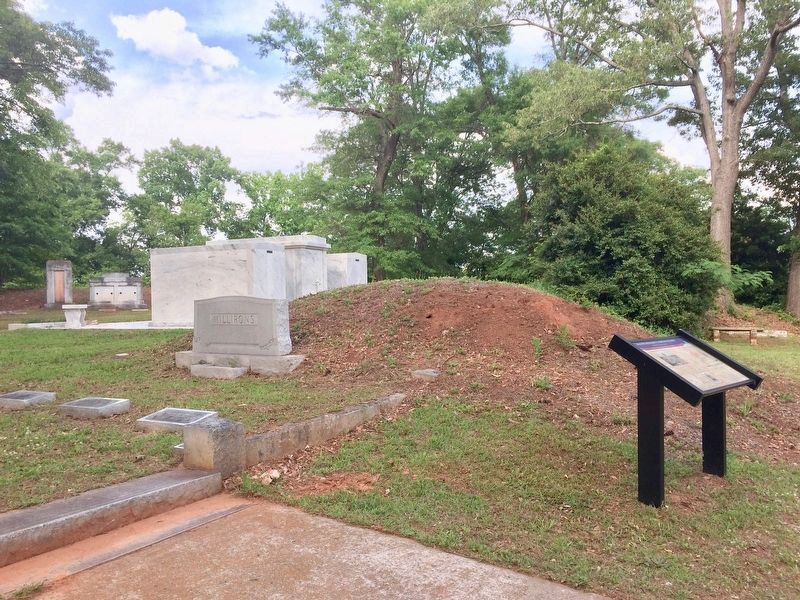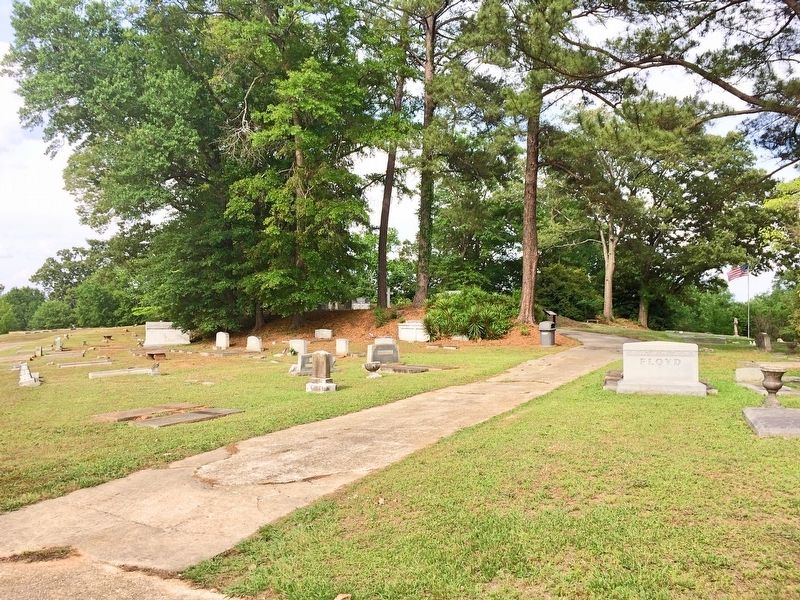Macon in Bibb County, Georgia — The American South (South Atlantic)
Macon Defensive Fortifications
The War Comes Home
— Wilson's Raid Heritage Trail —
In April 1864, Confederate Major General Howell Cobb set up his headquarters at Macon and organized a reserve force of about 2,500 men. Most were too young or too old to fight on the front or worked in Macon's numerous armament factories. By summer, the Georgia Reserves and slave labor began constructing a system of defenses around the city. It was to include a dozen dirt forts, with rifle pits and artillery positions where cannon could be placed. Yet by the fall Cobb expressed frustration with the lack of available wagons and mule teams to aid in the construction. He also complained about his inability to obtain and to pay a sufficient number of laborers. Cobb wrote, "At present we have large numbers of Negroes employed and as far as I know, not the first (step) taken to provide for the payment of the hands."
In the spring of 1865, Union Major General James Wilson beginning with approximately 14,000 cavalrymen rode through Alabama captured Columbus, Georgia, then quickly continued east toward Macon. The Federals were concerned about the "very substantial character" of Macon's defensive fortifications. On April 20, 1865, under a white flag of truce and with news of a general armistice agreement to end the war, representatives of General Cobb met General Wilson's advance units west of the city on the Columbus Road. But the Federals, riding hard and out of direct communications with either Wilson or Major General William T. Sherman in North Carolina, did not yet know the main Confederate army there had agreed to a 48-hour truce for the purpose of arranging the final surrender of all Confederates in the Carolinas, Georgia and Florida. The Federals refused to accept Cobb's information, and swept forward through Macon's western fortifications. Cobb ordered his reserves to stand down, and Wilson's advance occupied Macon without a significant fight. Wilson noted, "When I reached there two hours and a half later, [Macon] was as quiet as a country village that had never heard a harsher tone than a flute note." Landscape architect Calvert Vaux, co-designer of Central Park in New York City and of the White House grounds in Washington, DC, carefully preserved this earthwork, incorporating it into his master plan for Riverside Cemetery in 1887. Many Confederate veterans are
buried throughout the cemetery. Most of Macon's abandoned fortifications were leveled to make way for homes and businesses. Two other area earthworks remain besides the one here. One is behind the Dunlap Farm House, within Ocmulgee National Monument. The other is near Jackson Springs Park, almost directly across the Ocmulgee River.
Erected 2011 by Georgia Civil War Heritage Trails, Inc.
Topics and series. This historical marker is listed in these topic lists: African Americans • Cemeteries & Burial Sites • War, US Civil. In addition, it is included in the Georgia Civil War Trails series list. A significant historical month for this entry is April 1864.
Location. 32° 51.102′ N, 83° 38.184′ W. Marker is in Macon, Georgia, in Bibb County. Located at the very rear of the Riverside Cemetery, in the Pine Fort section, which is within the Jasmine Section. These sections are just beyond the Macon Public columbarium building. Touch for map. Marker is at or near this postal address: 1301 Riverside Drive, Macon GA 31201, United States of America. Touch for directions.
Other nearby markers. At least 8 other markers are within walking distance of this marker. Oak Ridge Cemetery (about 800 feet away, measured in a direct line); General Edward Dorr Tracy, Jr. (approx. 0.2 miles away); Unknown, But Not Forgotten (approx. 0.2 miles away); a different marker also named Oak Ridge Cemetery
(approx. 0.2 miles away); a different marker also named Oak Ridge Cemetery (approx. ¼ mile away); Alfred Holt Colquitt (approx. ¼ mile away); John Basil Lamar (approx. ¼ mile away); Confederate Memorial Day in Macon (approx. 0.4 miles away). Touch for a list and map of all markers in Macon.
Regarding Macon Defensive Fortifications. In the spring of 1864, Union forces approached Macon from the north and west. On a bluff above the Ocmulgee River, the Macon Volunteers and impressed slave labor, under the command of General Howell Cobb, built a parapet to serve as a point of lookout and defense. Twenty years later, several prominent citizens of Macon – some former Confederate officers – founded Riverside Cemetery in 1887. The Civil War era redoubt remains intact, today overlooking the Violet section where family estate lots are carefully tucked between perfectly landscaped terraces. It is a historic landmark on Georgia’s Civil War Trail. Many other earthworks were built to defend Macon, but only two in addition to Riverside’s remain; one at the Dunlap Farm, now the site of Ocmulgee National Monument, and one at the current Baconsfield area, both on the river’s east side.
Credits. This page was last revised on November 16, 2017. It was originally submitted on May 3, 2017, by Mark Hilton of Montgomery, Alabama. This page has been viewed 544 times since then and 29 times this year. Last updated on May 9, 2017, by Byron Hooks of Sandy Springs, Georgia. Photos: 1, 2, 3. submitted on May 3, 2017, by Mark Hilton of Montgomery, Alabama.


